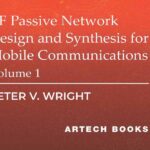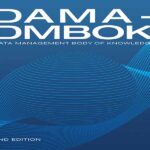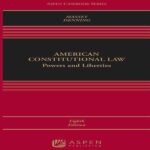- عنوان کتاب: Parametric Experiments in Architecture
- نویسنده: Francesco-Di-Paola,-Andrea-Mercurio
- حوزه: هنر معماری
- سال انتشار: 2022
- تعداد صفحه: 139
- زبان اصلی: انگلیسی
- نوع فایل: pdf
- حجم فایل: 8.28 مگابایت
این مطالعه نتایج یک تحقیق تجربی را ارائه میکند که فرآیند طراحی یک سیستم اتصال برای سازههای شبکه بامبو را به طور عمیق بررسی میکند و راهحلهای جدید و پیشرفتهای را پیشنهاد میکند که حداکثر آزادی ترکیب را تضمین میکند. تولید پرینت سه بعدی انواع مختلف اتصالات اتصال و طراحی معماری – ترکیبی یک سازه موقت که به عنوان غرفه نمایشگاهی در نظر گرفته شده است، اعتبار راه حل تکنولوژیکی تعریف شده را ممکن ساخته است. در حال حاضر بامبو علیرغم اینکه یکی از اصلی ترین مصالح ساختمانی طبیعی در زمینه معماری پایدار است، به دلیل عدم وجود سیستم های اتصال کافی، به خصوص در اروپا که مقررات محدودکننده تری در آن اعمال می شود، به طور گسترده مورد استفاده قرار نمی گیرد. ساقه های بامبو پروفیل های توخالی طبیعی هستند که با عملکرد مکانیکی بالا مشخص می شوند و یک ماده کم هزینه بسیار تجدید پذیر هستند. آنها ایجاد ساختارهای سبک و مقاوم را ممکن میسازند، اما ناهمگونی ابعادی و تمایل به شکافتن طولی انتهای ساقهها، ایجاد اتصالاتی را که قادر به بهرهبرداری کامل از مقاومت مواد باشند، دشوار میسازد. بامبو یک منبع تجدیدپذیر طبیعی در دسترس و به سرعت در حال رشد است که بسیار قوی است و خود را به کاربردهای ساختاری می رساند. تطبیق پذیری استفاده از مواد می تواند راه حل های خبری برای حفاظت و توسعه میراث فرهنگی، به ویژه در مناطق جغرافیایی فقیرتر ارائه دهد. در انطباق با اهداف قرارداد سبز جدید اروپا، که اصول الهام بخش جنبش تاریخی باهاوس را که توسط معمار والتر گروپیوس در سال 1919 در وایمار تأسیس شد، به کار می گیرد، استفاده خردمندانه از مواد خام طبیعی مانند بامبو، طراحی جدید را فعال و ترویج می کند. رویکردهایی با هدف پایداری و کاهش تأثیر آب و هوا.
The study presents the results of an experimental research that explores in depth the design process of a joining system for bamboo lattice structures, proposing new and advanced solutions that guarantee maximum compositional freedom. The 3D printing production of different types of connection joint-type and the architectural– compositional design of a temporary structure, intended as an exhibition pavilion, have made it possible to validate the defined technological solution. Currently, bamboo, despite being one of the main natural building materials in the field of sustainable architecture, is not widely used due to the lack of adequate connection systems, especially in Europe, where more restrictive regulations are in force. The stalks of bamboo are natural hollowprofiles characterized by high mechanical performance and are a highly renewable low-cost material. They make it possible to create light and resistant structures, but the dimensional heterogeneity and the tendency to longitudinal splitting of the ends of the stalks make it difficult to make connections capable of fully exploiting the resistance of the material. Bamboo is a rapidly growing, naturally available renewable resource that is quite strong and lends itself to structural applications. The versatility of use of the material can offer newsolutions to cultural heritage conservation and development, especially in poorer geographic areas. In compliance with the aims of the new European Green Deal, that takes up the inspiring principles of the historical Bauhaus movement, founded by the architect Walter Gropius in 1919 in Weimar, the wise use of natural raw materials such as bamboo activates and promotes new design approaches aimed at sustainability and reduced climate impact.
این کتاب را میتوانید از لینک زیر بصورت رایگان دانلود کنید:
Download: Parametric Experiments in Architecture





































نظرات کاربران